Welcome to our complete guide on how to grow zucchini! If you’re a fan of this versatile and nutritious vegetable, then you’ll love learning all about the best practices for growing your own at home. Whether you’re an experienced gardener or just starting out, we’ve got everything you need to know about planting, caring for, harvesting, and using zucchini in delicious recipes. From seed selection to soil preparation and pollination, our comprehensive guide will walk you through each step of the process so that your zucchini plants can thrive. So grab your gardening gloves, and let’s get started!
Overview of Zucchini
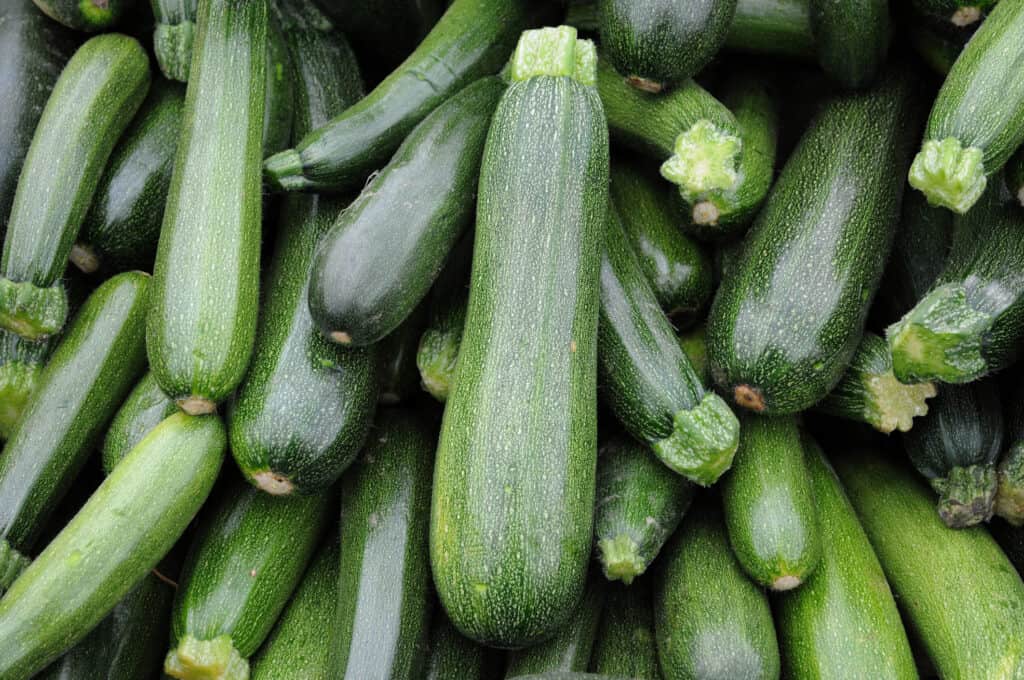
stall of zucchini on the market
©iStock.com/Pack-Shot
Zucchini, also known as courgette in some parts of the world, is a summer squash that belongs to the Cucurbitaceae family. It is a warm-season crop that thrives in fertile, well-drained soil and requires plenty of sunlight and water to grow properly. The plant has an impressive growth rate and can reach up to 3 feet tall within just a few weeks.
The zucchini plant produces large green leaves with yellow flowers that bloom for only a single day before wilting away. These flowers are edible and often used in cooking or stuffed with cheese or other fillings.
The fruit of the zucchini plant is typically harvested when it reaches around 6-8 inches long and 2 inches in diameter. However, there are many different varieties of zucchini available on the market today, ranging from small finger-sized fruits to larger ones weighing several pounds.
Zucchinis are incredibly versatile vegetables that can be eaten raw or cooked in a variety of ways, such as grilling, baking, frying, or sautéing. They are low in calories but high in nutrients such as vitamin A, potassium, folate, and fiber, making them an excellent addition to any healthy diet.
Overall, growing zucchini can be both rewarding and challenging at times, but by following the proper care instructions outlined throughout this guide, you should be able to harvest delicious fruits throughout the summer season!
Types of Zucchini
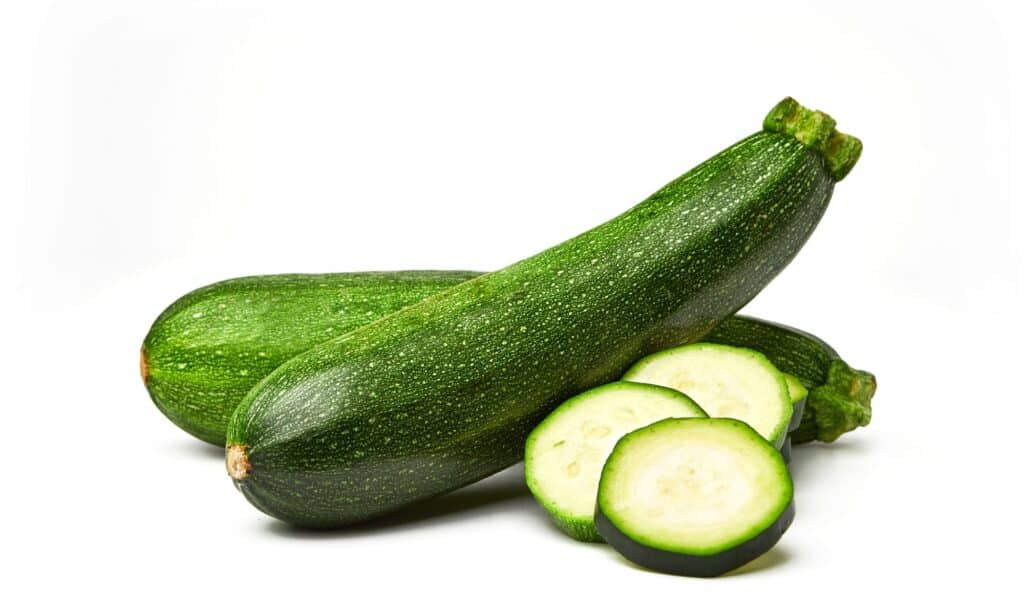
Zucchini plants can yield a very large amount of fruit!
©iStock.com/karzhanez
Zucchini squash is a versatile vegetable that comes in many different varieties. To help you navigate the market, we’ve compiled a list of some of our favorite cultivars. One option to consider is ‘Cashflow,’ which boasts a cylindrical shape and tender flesh that’s perfect for grilling or roasting. Another popular choice is the heirloom variety called ‘Cocozella (di Napoli),’ which features dark green skin and slender proportions that make it ideal for slicing into salads or sautéing with garlic and olive oil. Finally, if you’re looking for something with a bit more visual interest, check out ‘Tigress.’ This zucchini type has an attractive striped pattern on its skin and can add a pop of color to any dish. No matter which variety you choose, zucchini is sure to be a delicious addition to your garden and your kitchen!
How to Plant
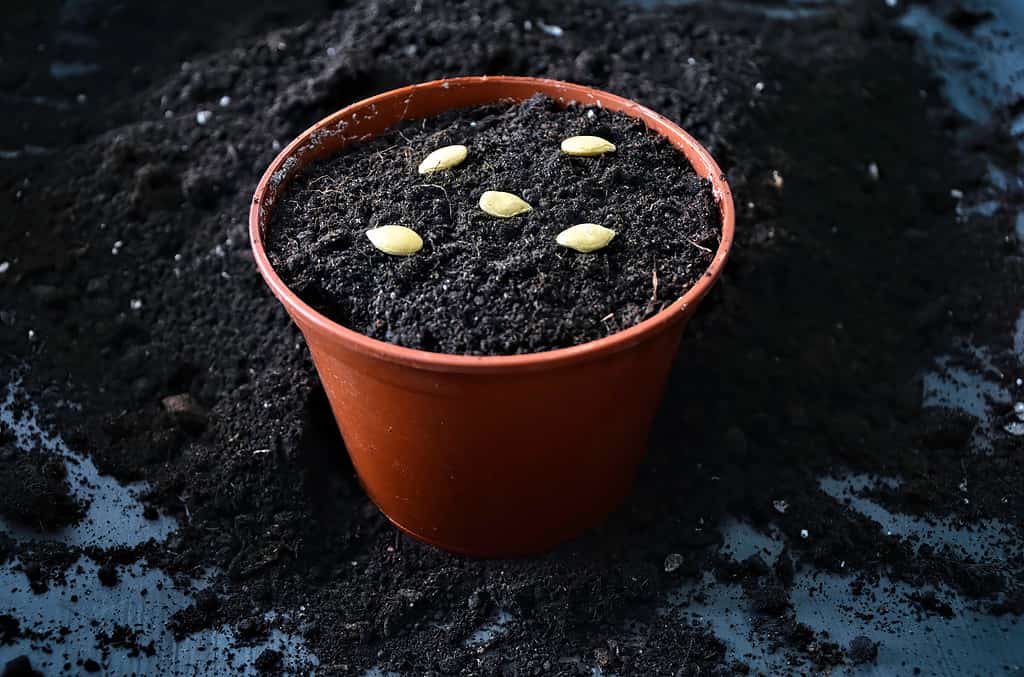
Zucchini seeds are large and easy to plant.
©Jullex51/Shutterstock.com
When it comes to growing zucchini, selecting the right location is key. Look for an area that receives full sun and is sheltered from strong winds to ensure proper pollination. Additionally, make sure the soil in your chosen spot is moist but not too wet and drains well. Squash plants thrive when they are well-fed, so it’s a good idea to mix aged manure or compost into the soil before planting.
Once you have selected your location and prepared the soil, it’s time to plant your seeds. Direct sowing seeds work best on level ground. Simply sow them one inch deep and two to three inches apart from each other. Alternatively, if you decide to use small mounds (or hills) for planting instead of level ground (because they tend to be warmer off the ground, which can aid in growth), then we recommend sowing 3-4 seeds close together within each mound in rows that are spaced between 3-6 feet apart.
If you live in colder climates where spring temperatures can dip low enough to harm young seedlings or delay germination times altogether, consider using row covers or plastic milk jugs as protective measures during those first few weeks after planting. Be sure to give your freshly planted seeds a thorough watering immediately after putting them into their new home.
To help lock in moisture around your newly-sown zucchini bed, adding a layer of mulch such as garden compost overtop of everything will also help prevent excess evaporation, especially during hotter months when water evaporates.
When to Plant

©FotosDo/Shutterstock.com
Growing zucchini can be a rewarding experience for any gardener. To ensure successful growth, it’s important to know when to plant your zucchini seeds. One option is to directly sow the seeds into the ground once all danger of frost has passed and both the air and soil have reached temperatures of at least 60ºF. Checking your local last frost date will help determine when it’s safe to plant.
Alternatively, if you wish to start your zucchini seeds indoors, peat pots are a good option. Begin planting them two to four weeks prior to your last spring frost date. However, it’s important to note that squash seedlings do not always transplant well and should be handled gently during the process.
To prepare the soil for planting, warm it with black plastic mulch in early spring after tilling and fertilizing as needed. This will provide extra warmth and moisture retention for optimal germination.
It’s also important not to rush into planting zucchinis too early in the season, as pests like squash vine borers can cause problems for young plants. Consider planting a few seeds in midsummer instead, as this timing can help avoid these issues, along with other potential diseases or pests that may emerge earlier in the growing season.
By following these tips on when and how best practices for planting zucchinis, gardeners can enjoy bountiful harvests throughout the growing season!
Companion Plantings
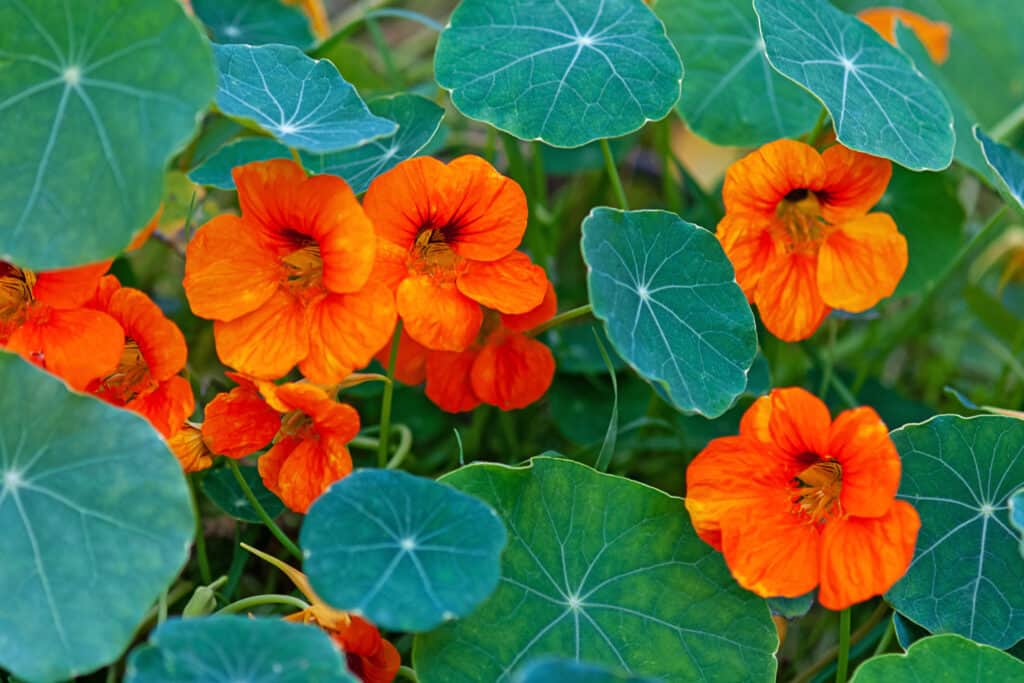
Nasturtiums are a great companion plant for zucchini.
©iStock.com/Nadya So
When planning your garden, it’s important to consider companion planting. Companion plants are those that have a mutually beneficial relationship with each other, helping each other thrive and repelling pests or diseases.
Zucchini is a particularly good candidate for companion planting because it can benefit from the presence of several different types of plants. One great option is beans – they fix nitrogen in the soil, which helps zucchini grow better. Borage is another excellent choice, as its flowers attract pollinators like bees and butterflies, which can help increase your zucchini yield.
Both dill and garlic can also be useful companions for zucchini squash. Dill attracts beneficial insects like ladybugs and lacewings that eat pests like aphids, while garlic has antimicrobial properties that help keep soil-borne diseases at bay.
Marigolds are also fantastic companions for zucchinis due to their ability to deter harmful nematodes from attacking plant roots. Nasturtiums offer similar benefits by attracting predatory insects such as hoverflies which feed on aphids and other common garden pests.
Finally, oregano makes an excellent companion plant for zucchinis due to its natural pest-repelling properties against many common threats, including spider mites and cabbage moths.
By selecting the right companions for your zucchinis, you’ll not only improve their growth but also reduce your reliance on synthetic pesticides or fertilizers, which can harm both your crops and the environment around them.
Plant Care
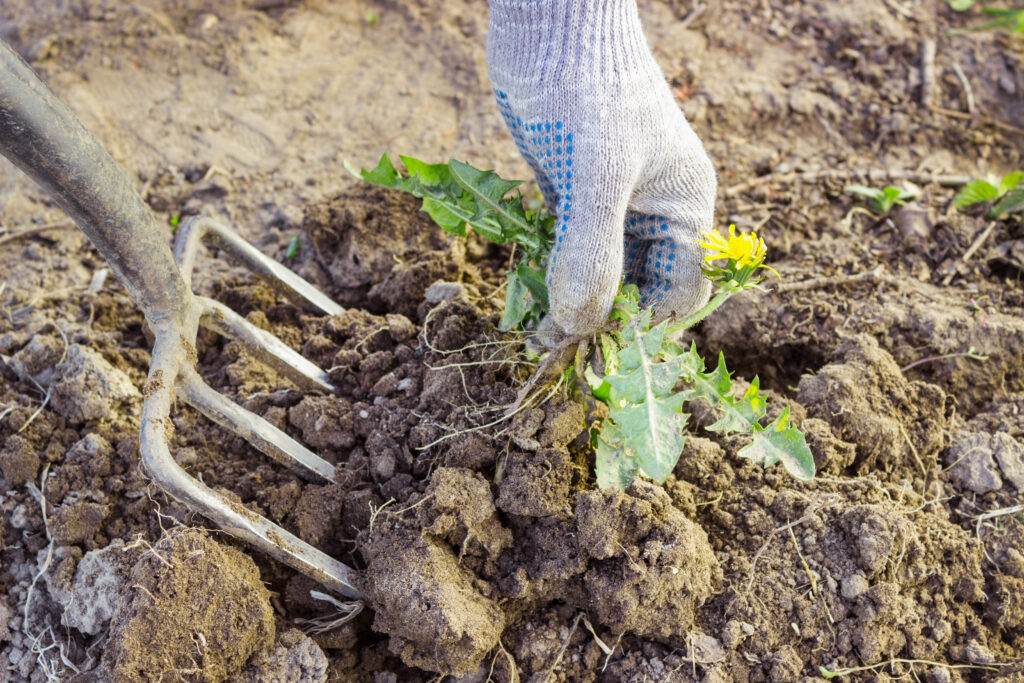
Removing weeds and using mulch are essential tips for growing zucchini.
©Sever180/Shutterstock.com
One key aspect of caring for zucchini is to use mulch in order to retain moisture, discourage weeds, and protect shallow roots. This will help ensure that your zucchini plants have the best possible conditions for growth.
Another crucial factor in maintaining healthy zucchini plants is ensuring that they receive adequate water. Zucchinis thrive in moist soil, so it is important to water them thoroughly, frequently, and consistently with at least 1 inch of water per week. During fruit formation and throughout their growth cycle, diligent watering is necessary to ensure optimal results.
It’s also essential for the soil around your zucchinis to remain moist up to 4 inches down. Soaking the soil during watering sessions rather than just lightly sprinkling with water may help achieve this goal more effectively.
It’s worth noting that misshapen squash can result from inadequate fertilization or insufficient hydration levels. Therefore, removing any weeds that manage to emerge should be done regularly as well as cutting off any dead or shriveling leaves on your plant helps keep it tidy while improving its overall health condition.
To further enhance root development and moisture retention capabilities within your garden bed area where you grow your squashes, add extra mulch using organic matter, such as compost, manure, or straw-based products, which serve the additional purpose of keeping roots cool under hot weather conditions.
Once the zucchini plant starts to bloom, it is important to side-dress it with a balanced fertilizer. This will help provide the necessary nutrients for healthy growth and fruit production. However, even with proper fertilization, poor pollination can still be an issue.
Zucchini Pollination

If you don’t have many bees around your garden, you may need to hand-pollinate your zucchini.
©iStock.com/Pack-Shot
Squash flowers require pollination in order to produce fruit. Without adequate pollination from bees or other insects, the flowers may not bear fruit at all or may only produce small fruits. It is important to note that most squash plants have both male and female flowers.
The male flowers typically appear first on long thin stalks, while the female flowers have an immature fruit behind them. In order for successful pollination to occur, pollen from the male flower must be transferred to the female flower by either bees or manually by a gardener.
If you notice poor bee activity in your garden area, you can take action by manually pollinating your zucchini plants using a cotton swab. Simply dabbing the inside of each female flower with a cotton swab coated in pollen collected from several male flowers can help ensure successful fertilization.
Alternatively, adding plants that attract bees near your squash plants can also increase bee activity and improve overall pollination rates. Some great options for attracting bees include lavender, thyme, mint, and borage, among others.
By taking these simple steps towards good plant care practices when growing zucchini at home, you’ll soon be enjoying fresh, delicious zucchini!
How to Harvest

Timing is key when it comes to harvesting zucchini squash.
©Uryupina Nadezhda/Shutterstock.com
When it comes to harvesting summer squash, timing is key. It’s important to pick the squash when they are still tender and a bit immature, typically around 6 to 8 inches long. Oversized squash may look impressive, but they often have very little taste.
Unfortunately, many people make the mistake of waiting too long before harvesting their zucchini. This can result in tough and bruised fruit that doesn’t taste as good as it should. To avoid this problem, be sure to check your plants regularly for ripe fruits.
Most varieties of summer squash take around 60 days to mature from seed and are ready for harvest about a week after flowering begins. However, you should always consult the seed packet or other sources for more specific information on when your particular variety will be ready.
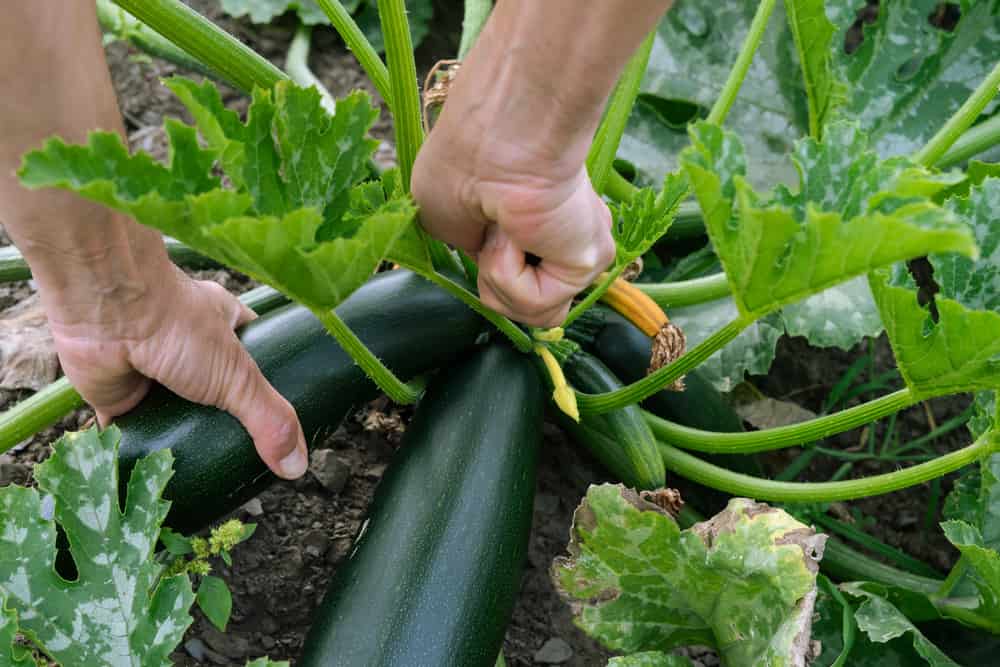
Use a sharp knife to cut the fruit off the vine when harvesting zucchini.
©Maria Castellanos/Shutterstock.com
When harvesting your squash, use a sharp knife to cut (rather than break) the fruit off the vine. Breaking off the fruit can damage the soft stem of the plant and make it more susceptible to disease or pest problems later on.
Be sure to leave at least an inch of stem attached to each piece of harvested fruit. This helps prevent moisture loss and keeps them fresh longer.
If you want to slow down production or encourage smaller fruits with better flavor, consider removing some male flowers or picking smaller fruits more frequently.
Finally, don’t forget that summer squash is highly susceptible to both frost damage in fall and heat damage during excessively hot summers. So, complete your harvest before these environmental factors become prevalent.
How to Store
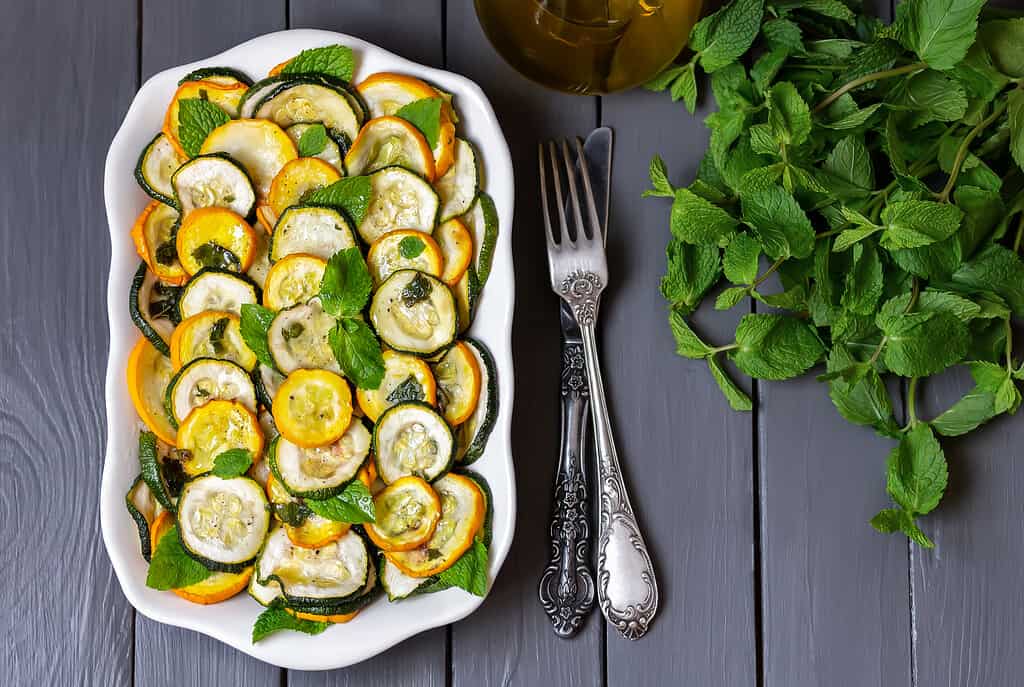
Zucchini is a very versatile food. There are hundreds of zucchini recipes!
©Dementieva Iryna/Shutterstock.com
As any zucchini enthusiast knows, fresh summer squash has a relatively short shelf life. In order to prolong the lifespan of your recently harvested zucchinis, it’s important to store them properly. To do so, simply place unwashed zucchini in either a plastic or paper bag with one end open – this encourages air circulation and helps prevent moisture buildup that can lead to spoilage.
Once you’ve packed your zucchinis away in their designated bags, pop them into the refrigerator crisper drawer. This will help maintain an optimal temperature range for storage and ensure that they stay fresh for as long as possible. With proper refrigeration techniques, your zucchinis should last up to 10 days before beginning to show signs of decay.
But what if you find yourself with too much zucchini on hand? Fear not! Freezing is always an option when it comes to extending the life of this versatile vegetable. Simply slice your excess produce into manageable portions and pack them away in freezer-safe containers or bags for later use.
How to Use
If you’re lucky enough to have a bountiful harvest of zucchini, there are plenty of ways to incorporate this versatile vegetable into your meals. One classic preparation is to slice it into rounds and sauté it with garlic and olive oil until tender. From there, you can add other vegetables like cherry tomatoes or bell peppers for a colorful side dish.
Another popular way to use zucchini is in pasta dishes. You can spiralize the zucchini into thin noodles and toss them with your favorite sauce for a low-carb alternative to traditional spaghetti. Or, try using sliced or grated zucchini as a layer in lasagna for added texture and flavor.
Zucchini also pairs well with cheese, making it a great addition to pizza or quesadillas. Simply top your crust or tortilla with slices of zucchini (or grate it over the top), along with mozzarella cheese and any other toppings you prefer.
For something sweet, consider using shredded zucchini in baked goods like muffins or bread. The mild flavor of the vegetable won’t overpower the sweetness of the batter but will add moisture and nutrients.
The photo featured at the top of this post is © iStock.com/Pack-Shot
Thank you for reading! Have some feedback for us? Contact the AZ Animals editorial team.







